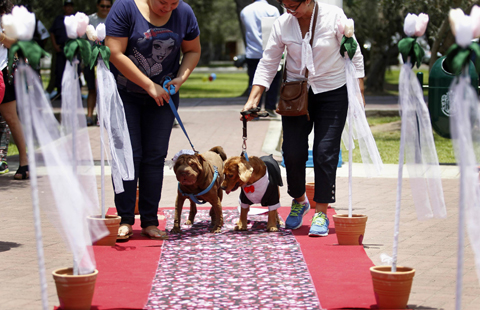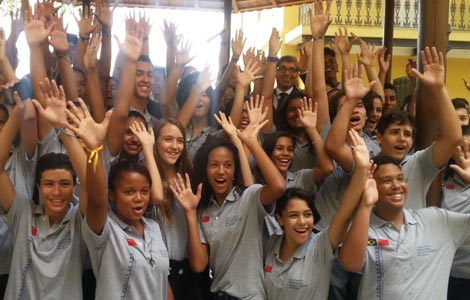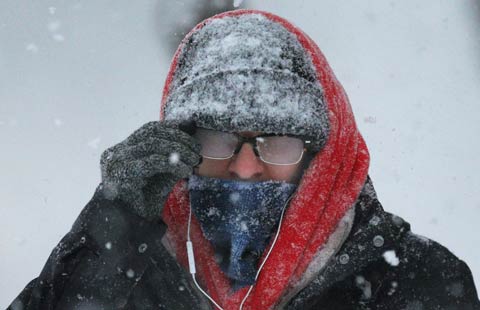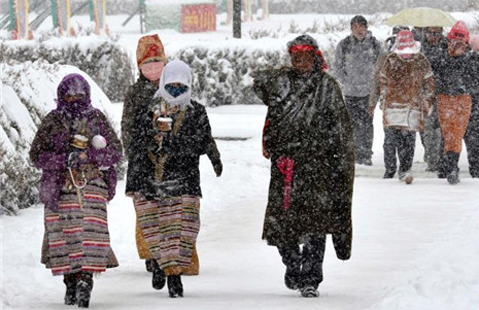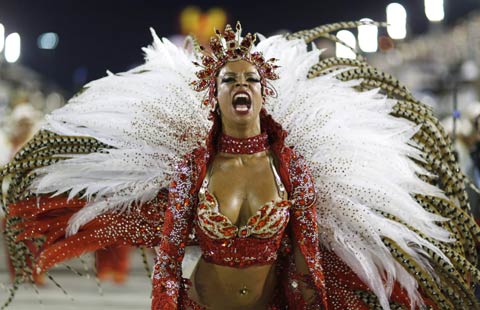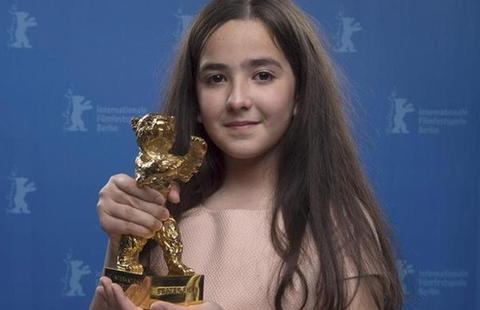Encore for a tea dance
Updated: 2015-02-17 07:33
By Belle Taylor(China Daily)
|
|||||||||
Shanghai's historic Peace Hotel hosts a gracious afternoon tradition that evokes the city's 1930s heyday. Belle Taylor checks out the scene in the right shoes. Belle Taylor
The room is an art-deco wonder. The musicians are world-class. And my dance partner is a professional who glides over the floor as if he were waltzing on clouds.
Too bad my own elegance isn't quite up to scratch with the surroundings - I keep tripping over my own two feet.
Luckily, my dance partner is experienced enough to keep me upright and moving.
I am at the Fairmont Peace Hotel's Afternoon Tea Dance in the elegant Jasmine Lounge. Once a staple of the social calendar in 1930s Shanghai, the dance was resurrected just under two years ago and has proved popular with tourists, dance lovers and the handful of elderly Shanghai residents who remember the city when it was known as the "Paris of the East".
"This hotel is part of Shanghai. It's part of the history," enthuses Belle Bai, from the hotel's marketing department, after I gratefully extricate myself from my dance partner.
We are sitting in the lounge adjacent to the dance floor sipping the hotel's special Irish tea, a rich blend with hints of chocolate and cigars. An afternoon tray is next to us with a beautiful array of small cakes, pudding and macaroons.
The band strikes up another tune and the professional dancers move through the crowd and pull willing partners to their feet, leading them to the floor. The band, a revolving door of world-class musicians, plays a mix of jazz standards and classic Shanghai songs from the 1910s, '20s and '30s.
Bai tells me that since resurrecting the dances, the event has become something of a magnet for people who want to relive the glamour of old Shanghai. She says some visitors are memorable - such as the couple in their 80s who had traveled to Shanghai, the city of their birth, from their current home in the United States.
The man and woman had left Shanghai for Taiwan, and later the US, after 1949, but in their youth, had attended the afternoon tea dances at what was then the Cathay Hotel. Walking into the Fairmont Peace Hotel, they were so thrilled to have stepped back in time, to experience their lost youth, that they refused to leave the dance floor. The staff even started to worry for their safety.
The Fairmont Peace Hotel was built by British-Iraqi millionaire Victor Sassoon and first opened its doors in 1929 as the Cathay Hotel.
The hotel is a treasure trove for history buffs. Much of the furniture is original and is perfectly preserved from the 1920s. The detailing in the ceilings features dachshunds - Sassoon's beloved pets. Even the building itself is in the shape of the Chinese character feng, meaning lavish.
The Cathay's heyday ended in 1941 with the Japanese occupation.
In 1952, the Shanghai government turned the building into an office and in 1956 the hotel started to once again welcome international guests and has hosted a variety of world leaders and celebrities, from the former Australian prime minister Gough Whitlam to boxer Muhammad Ali.
Bai takes me on a tour, first around the small museum with photos and artifacts from the 1930s and then up the stairs to see a few of the nine "nation" suites - rooms decorated in the style of what Sassoon decided were the world's most powerful nations at the time.
We take a trip through India, Japan and Great Britain, with each room representing ideas about these nations formed 80 years ago.
Eventually, we walk up to the balcony overlooking the Bund and step out, taking in the spectacular view, staring out to the futuristic Lujiazui area, standing on history.
Contact the writer at belletaylor@chinadaily.com.cn
(China Daily 02/17/2015 page24)
Most Viewed
Editor's Picks

|

|

|

|

|

|
Today's Top News
China to import more iron ore from Vale
Mexico makes moves to attract more Chinese tourists
Brazil, Peru and China to specify railway details
Growing up recluse in a dazzling world of Manhattan
Apple studies self-driving car: auto industry source
Second-longest railway built overseas by China rolls out
Graft buster publishes corruption cases in environmental sector
2 deadly shootings within hours in Copenhagen
US Weekly

|

|
